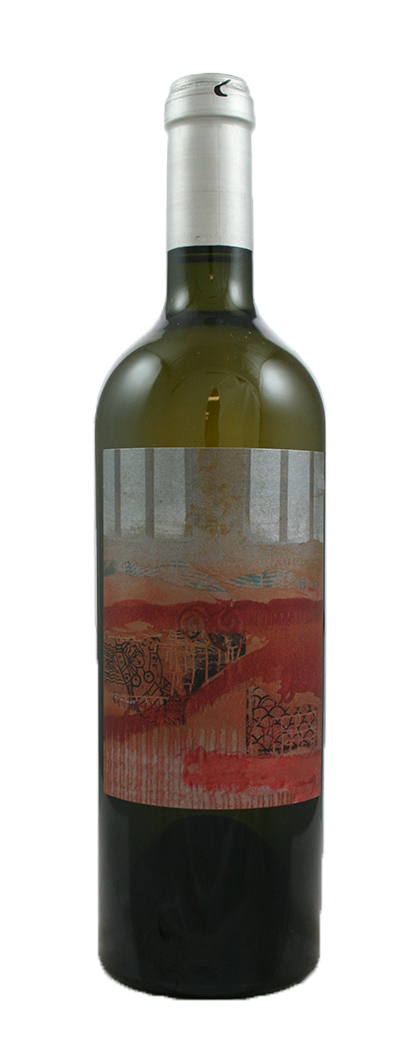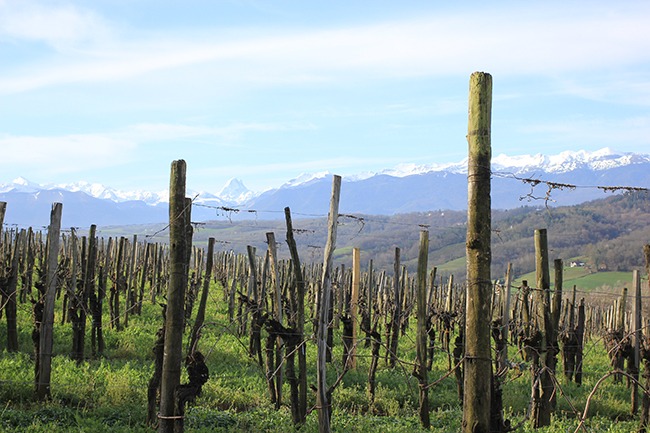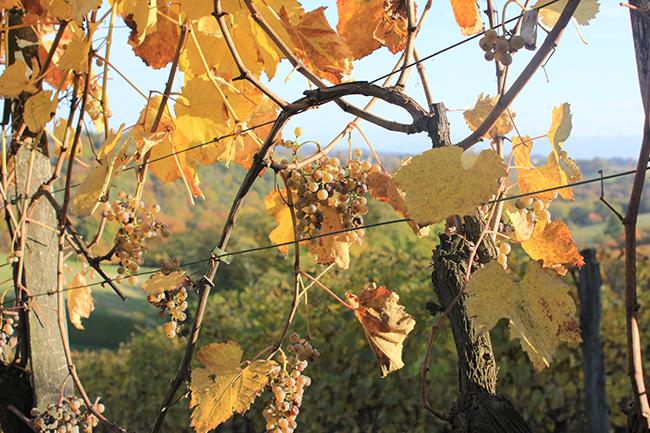I have had a huge soft spot for Jurançon since I first encountered a dry version of the wine in a restaurant in Marylebone in the early 1990s. Our company originated from a love for the wines of the Pyrenees, in general, and Jurançon, in particular, and one of our earliest wine lists showed that we work with half a dozen growers in what was an almost unheard of region (in the UK, that is).
Jean-Bernard is the third generation of the Larrieu family to run this 17-hectare estate. Jean-Bernard’s grandfather, Jean, bought the estate in 1920 and his son Marcel (Jean-Bernard’s father) took over from him. Marcel still helps Jean-Bernard run the estate using polyculture (vines, cattle and fruit–with their hillside-grown strawberries being, at one time, one of the principal sources of revenue for the family). Vines were planted but the grapes were initially sold directly to the local Cooperative. The first vinification took place in the year 1985, when Jean-Bernard, after completing his studies in viticulture and winemaking, decided to name the estate ’Clos Lapeyre’.
It was just him, farming his vines, fermenting his grapes, ageing his wines, bottling and then selling them. In 2000, the vineyard covered about 10 hectares; in 2004 the magnificent, old hillside vineyards of Domaine de Nays-Labassère were incorporated, with an extra 7-hectares in the heart of Chapelle-de-Rousse. The vines plunge their roots into loam and sandy and siliceous clay soils over the typical Jurançon ‘pudding-stone’ (poudingue) limestone bedrock, rich in pebbles and siliceous gravel. It’s a combination of stones formed from the erosion of the Pyrenées, covered with soft layers.
Jean-Bernard makes a spectrum of wines that range in style from ripe citrus to tropical fruit, all characterised though by their beautiful natural acidity.
Located 40 km from the foot of the Pyrenees, and 100 km from the Atlantic ocean. The vineyards receive ample sunshine and an average temperature of 24°C during the vegetative period (May to October) and also enjoy a very high annual rainfall (1200 mm). The autumns are particularly mild and dry, with lengthy Indian summers in some years as the result of hot winds from Spain: the Balaguèr wind. Thanks to this almost “tropical” climate, the landscapes are extremely diverse; the region traditionally devoted to mixed farming with lush meadows for cattle breeding above all, as well as corn, fruit trees, various vegetables, and, finally, vines on the most beautiful slopes facing the Pyrenees. Jurançon is renowned for its extraordinary nectars made from tiny wind-and-sun-shrivelled Petit Manseng grapes which can be harvested right into the end of November and even December.
Organic viticulture has been practiced since 2002 – certified by Qualité France. Travail du sol to improve drainage. Organic composting takes place, no synthetic products are used, and biodynamic methods have been employed since 2014. Soils are ploughed in spring between the rows and the vines to aerate the soils and promote deep rooting.
Clos Lapeyre use the white grapes of Gascony and the Pyrenees: Gros Manseng, Petit Manseng and Petit Courbu. Recently, they have planted the ancient Caramalet grape. Mantoulan is the name of the lieu-dit 500m west of the Clos Lapeyre domaine. They decided to replant this plot with high density massale selection vines.
New/old grape alert and consequent digression:
Camaralet de Lasseube, or simply Camaralet, is an ancient and strongly flavoured French white-wine grape variety on the verge of extinction. It is primarily used as a blending component in Jurançon’s whites wines along with varieties such as Petit Manseng, Gros Manseng and Petit Courbu. In 2000, just half an acre of Camaralet de Lasseube remained in southwestern France.
Its decline is in part due to an unusual characteristic: it is a female vine, not hermaphroditic like most other vines. This means that it must be planted very closely with other vines in order to pollinate, either male or hermaphrodite. This peculiarity makes it more of a challenge in the vineyard, along with its low yields.
The grapes from this 1.5 ha plot are harvested by hand. After slow pressing, the slightly settled juices ferment slowly in foudres (aged 1 to 5 years), before spending one further year on lees (regularly stirred) in vats and six months in vats before being bottled after two winters.
 Mantoulan is a fascinating white wine, rich on body and golden in autumnal fruit character. Bright amber, somewhat waxy, with a half-nutty oxidative nose featuring complex aromas of rhubarb, pink grapefruit, marzipan and ripe green apples. The finish is particularly long with a pleasing interplay between bruised orchard fruits and ripe citrus and even herbs.
Mantoulan is a fascinating white wine, rich on body and golden in autumnal fruit character. Bright amber, somewhat waxy, with a half-nutty oxidative nose featuring complex aromas of rhubarb, pink grapefruit, marzipan and ripe green apples. The finish is particularly long with a pleasing interplay between bruised orchard fruits and ripe citrus and even herbs.
2018 Jurançon sec “Mantoulan”
*
Interested in finding out more about the wines of Clos Lapeyre? Contact us directly:
shop@lescaves.co.uk | sales@lescaves.co.uk | 01483 538820




What level of sulphites in this wine please?